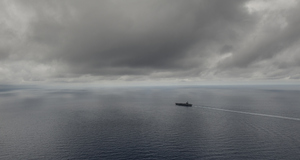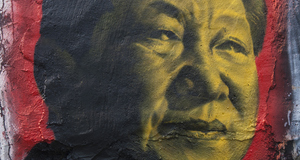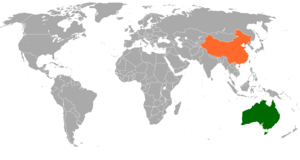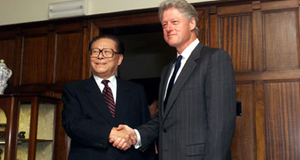Featured Article:The Taiwan Strait: From Civil War to Status QuoII. Unresolved Conflict and Contemporary Cross-Strait RelationsIn 2010 the conflict between China and Taiwan remains unresolved, while the U.S. position has not changed. In conjunction with the 1979 Taiwan Relations act, the U.S. recently approved a major $6 billion arms sale to Taiwan, a move which raised tensions between both countries, and is still considering the sale of F-16 fighter jets to the island. A Chinese foreign minister announced that the weapons sale, and also a meeting between President Obama and the Dalai Lama, “had seriously disrupted the relationship” between the two countries (Wines, 2010). Underneath the political rhetoric, however, a different story may be unfolding. Nationalism and its Challenges: A Destabilizing Factor in Cross-Strait RelationsMao Zedong’s success in leading the Communist Party to victory in 1949 was accomplished in part through the mobilization of mass sentiment, which echoed a strong sense of humiliation after nearly a century of foreign incursion and decline. In contrast, Mao’s now famous phrase—“The Chinese people have stood up”2—indicated the strong sense of national pride that China would retain going forward. This sense of pride presented itself as both fuel for growth and a sometimes-excessive zeal requiring containment. Indeed, a strong sense of nationalism has had great influence on China’s continuing ‘revolutionary development.’ So strong is this tendency towards extreme nationalism that the Chinese government has actually sought to dampen its impact at times, especially as it relates to potentially explosive foreign policy issues. Zheng and Fook write, “From the perspective of the Chinese leadership, nationalism is a double-edged sword and it is counter-productive to pursue nationalism to the hilt…. If popular nationalism was allowed unbridled rein, rampant ‘anti-foreign feelings’ would undermine China’s open door policy and efforts to build up economic linkages with other more advanced countries” (2007: 52). Additionally, Ogden makes the point that “popular nationalism has taken on a life of its own, undeterred by official efforts to restrain it” and has sometimes inspired more extreme positions than might otherwise have prevailed (2002: 333).This “New Nationalism,” as it is called (Zheng and Fook, 2007: 48; Ogden, 2002: 334), was a major contributor to the deterioration of relations between 1995-2005, during which period the pro-independence party—the Democratic Progressive Party (DPP), led by Chen Shui-ban—gained power in Taiwan through national elections. Relations between Taiwan and China during the DPP’s leadership were rocky at best, as both sides sought to appease national sentiment: “In China, the rise of nationalistic fervor [had] made ordinary mainland Chinese unwilling to see Taiwan breaking away completely from the mainland…. In contrast, the emergence of a Taiwanese consciousness [had] led more and more ordinary Taiwanese to regard their separateness from the mainland as a unique feature to be safeguarded at all costs” (Zheng and Fook, 2007: 48). Nationalist attitudes fueled more aggressive political positions on both sides, to the detriment of the China-Taiwan relationship during the period. In 2008, the DPP lost its leadership position to the more moderate KMT while Beijing also made efforts to tone down reunification rhetoric, leading to what has been a thawing of tensions. Gilley nevertheless makes the following observation about the position of nationalism in the Chinese political consciousness:
Despite the recent thaw, the risk and instability presented by the possibility of a return to nationalism has not entirely disappeared, even as the PRC appears to be moving towards a more accommodating approach to Taiwan. For a large portion of the Chinese population, returning Taiwan to the mainland remains an important issue. “To most Chinese, the reintegration of Taiwan to mainland China is very, very important,” said Chen Ying, a Chinese mainlander living in Guangdong province. “Taiwan has been a part of China for many centuries,” he added, “the reintegration of Taiwan is perfectly justified” (Interview, via email, April 5, 2010). This view, prevalent on the mainland, creates a politically complicated issue for leaders. In Beijing, striking a conciliatory tone with Taiwan is made more difficult by domestic sentiment. Economic Growth and Complex Interdependence: Making Conflict Less LikelyThough China, Taiwan, and the U.S. may suffer from a ‘rhetorical divide,’ underneath this turmoil lays a web of connections, underpinned by strong economic relationships, that is growing stronger every year. China has undergone significant transformation in the last quarter-century, managing an astounding 9% average growth rate and catapulting its importance on the world stage (Yusuf and Nabeshima, 2006: 35); overall, this trend turned China into the third largest economy in the world according to the most recent World Bank data (“Gross Domestic Product 2008,” 2009). This change has also significantly changed the calculation of any state that might have otherwise considered supporting an independent Taiwanese state: where, in the early years of the PRC, Taiwan was a much more powerful and advanced economy in comparison to the mainland, today—after China’s impressive growth—the mainland has far surpassed Taiwan in importance to international trading partners. According to China’s “One-China” policy, recognizing Taiwan would cause the termination of relations with China and would therefore be a very costly endeavor for any country that decided to do so.3 Additionally, both China and Taiwan are major trading partners of the United States. In the first month of 2010, China was the U.S.’s second largest trading partner and Taiwan was the ninth (“Top ten countries with which the U.S. trades,” 2010). Even more significant though has been the strengthening of economic ties between China and Taiwan, and the shifting relationship between the U.S. and Taiwan. “Once Taiwan’s largest trading partner,” writes Dumbaugh, “the United States has been surpassed by China and Japan,” falling to third-place in Taiwan’s total trade levels (2009: 11). The fact that Taiwan is now doing more business with China than with the U.S. is made even more notable because, since 1949, the two groups have maintained stringent limits on cross-strait travel, trade, and investment (Dumbaugh, 2009: 12). Increasing economic ties between Taiwan and China have also been accompanied by increasing levels of exchange across the board. Tourism, for instance, between the mainland and Taiwan has exploded as both sides have agreed to lift limits on travel and increase the number of daily flights to the island. With the 2008 Taiwanese election of Ma Ying-jeou, the more moderate chairman of the KMT, a number of high-level political talks were also initiated. Describing a “fundamental shift in the political relationship between Taiwan and China,” Gilley says that the two parties are “now approaching their relationship using completely different assumptions than those that governed cross-strait relations for decades,” placing economic issues “of integration and competitiveness ahead of nationalist protectionism” (2010: 48). The changing relationship between China and Taiwan underscores the idea of “complex interdependence” originally proposed by Keohane and Nye: as states grow more economically, politically, and culturally intertwined they develop increased interdependence and therefore military action becomes less desirable (1973). This appears to be happening between China, Taiwan, and the United States. As trade and investment between China and Taiwan, two historical enemies, has accelerated at an increasingly rapid pace, social, political, and cultural exchanges have followed. Not only has this helped to moderate the more extreme sentiment that was common in the 1990s and early 2000s, but it has also changed the calculus of the leadership to the point that physical confrontation has become too costly to be considered rational.Continued on Next Page » Suggested Reading from Inquiries Journal
Inquiries Journal provides undergraduate and graduate students around the world a platform for the wide dissemination of academic work over a range of core disciplines. Representing the work of students from hundreds of institutions around the globe, Inquiries Journal's large database of academic articles is completely free. Learn more | Blog | Submit Latest in International Affairs |


















